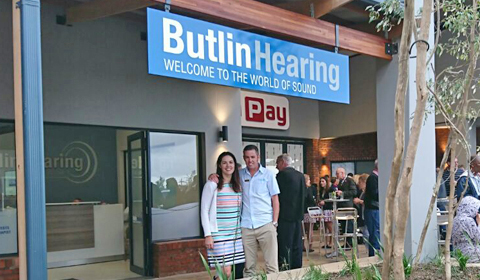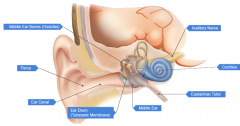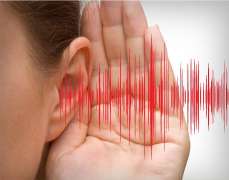Butlin Hearing

REVIEWS
PHOTO GALLERY
ABOUT US

Butlin Hearing is a family owned practice consisting of Laurie Butlin, his daughter, Claire Buys, and his son, Mark Butlin. All clients consult personally with either Claire or Mark.
Medical Aid rates are charged, and we claim directly from the medical aids, only after the hearing aids have been trialed and fitted. A free 30 day evaluation period applies to all hearing aids fitted.
Laurie Butlin
Laurie Butlin qualified as a Pharmacist at Rhodes University in 1973, and practiced as a Pharmacist in Howick until 2005. He completed his Advanced Diploma in Hearing Aid Acoustics at the University of Pretoria in 2005, and set up practice as a Hearing Aid Acoustician in Howick in 2006. In 2007 he opened up branches in Pietermaritzburg (Wembley Pharmacy), Hilton (Hilton Pharmacy) and Estcourt (Medical Hall Pharmacy).
He is registered with the Health Professions Council of SA, and is a member of SASLHA (South African Speech, Language and Hearing Association), as well as SHAA (Society of Hearing Aid Acousticians of SA)
Claire Buys
Claire Buys graduated from Unisa in 2006 with a BCom degree. She has 15 years experience in business management. In 2015 she completed her Advanced Diploma in Hearing Aid Acoustics at the University of Pretoria, and in June 2016 began practicing as a Hearing Aid Acoustician with Butlin Hearing.
She is registered with the Health Professions Council of South Africa (HPCSA) and is a member of SASLHA (South African Speech, Language and Hearing Association), as well as SHAA (Society of Hearing Aid Acousticians of SA)
PRODUCTS & SERVICES
What services do we offer?
- Testing of hearing.
- Explanation of results.
- Treatment and rehabilitation options.
- Free trial period of hearing devices.
- Adjustment of hearing devices (If you have purchased a hearing device elsewhere we will gladly help you to obtain the best function out of your device).
- Hearing aid services and repairs support.
- We carry a full range of batteries and accessories.
- Supply of swim plugs and specialized ear protection to reduce the risk of noise damage.
What does a consultation entail?
The first step is the taking of a case history.
Secondly, a variety of tests are conducted in a sound proof booth to establish if one’s hearing is below the optimal (all equipment used in the practice is calibrated to ensure accurate and reliable results).
After the testing, all of the results will be explained to you.
Should the test results reveal normal hearing you simply have peace of mind that all is well.
Hearing aids are not the same as they used to be!
Technology has come a long way over the past couple of years and international companies now produce comfortable, stylish and discreet hearing instruments housing the latest digital technology. With the advance of digital technology your choice of instruments is vast and constantly evolving, and many of the models are available in a ‘micro’ size for those wishing to keep their hearing loss as discreet as possible.
Butlin Hearing deals with numerous internationally recognized hearing aid manufacturers, and it is through this diversity that we are able to ensure exceptional levels of technology, service and back up service.
We fit programmable instruments, which come in a wide range of styles, all of which allow greater fine tuning for the individual needs and lifestyles of our clients.
Products we utilize:
The style of a hearin g instrument describes the cosmetic look of the device, however, it also has important implications for the hearing loss, as certain types of hearing losses function best with certain types of styles.
The different styles of hearing instruments can be broadly separated into two categories: 'behind-the-ear' instruments and 'in-the-ear' instruments.
Behind-the-ear instruments:
Behind-the-ear (BTE) instruments are easier to handle and maintain for those who find cleaning and care for a smaller unit slightly troublesome. (Fig 1.1)
Receiver-in-the-ear (RITE/RIC) devices are another type of behind-the-ear instrument and account for 70% of fittings world-wide for suitable candidates. This is the most unobtrusive and aesthetically pleasing fitment. (Fig 1.2)
In-the-ear instruments:
In-the-ear (ITE) instruments are small units which are selected based on both client dexterity and the type and degree of hearing loss. (Fig 1.3)
In-the-canal (ITC) units are even smaller than the ITE units and again are selected based on both the hearing loss and client dexterity. (Fig 1.4)
Completely-in-canal (CIC) are the smallest of the in-the-ear units, and again your Hearing Aid Acoustician will be able to advise if this is the most suitable device for your particular requirements. (Fig 1.5)
Should I purchase one or two hearing aids?
This depends entirely on the type of hearing loss that you have.
However, something to keep in mind when making the decision is that we have been given two ears for a reason. Simply put, our ears' nerves meet in the brainstem, and at that meeting point, the brain begins the separation of speech from background noise.
Due to the brainstem’s function, two hearing instruments are almost always better than one, especially in noisy environments and group conversations. Hearing bilaterally (with both sides) also allows for calculations about the direction and location of sound.
However, at the end of the day, wearing one or two hearing aids is a personal decision and we will offer the client sufficient information and guidance in the decision making process.
Advantages of hearing aids
- Better hearing in difficult situations
- Sound localization
- Prevention of further hearing deterioration due to a lack of stimulation
- Improved speech discrimination
- Safety – eg. in traffic
- Social inclusion
- Improved quality of life
How does a digital hearing instrument work?
Sound enters the hearing instrument through a microphone and is sent to a microchip, where the sound is analyzed to define its pitch and loudness. The microchip drives the hearing instrument’s technology, which in some hearing aids is more advanced than the most sophisticated personal computers.
The microchip is set by your Hearing Aid Acoustician to compensate for specific amounts of hearing loss at different pitches, and the amplifier is directed to increase sounds by specific amounts, at specific pitches.
The sound is then delivered to the ear through an outlet in the instrument.
Different levels of technology are available, which relates to the sophistication of the microchip and internal circuits. The type of technology is selected to match both hearing loss and lifestyle requirements, with the more sophisticated technology being chosen for the more complex hearing losses and demanding communication lifestyles.
The microphone: Some instruments have 2 microphones which enable the instrument to determine the direction in which the hearer is looking. We usually look at what we want to hear, which helps the instrument to identify the primary signal and thus reduce some of the background noise. This is one of the most important features for helping people hear more effectively in groups.
The microchip:
Some instruments have more sophisticated processing platforms on the microchip which enables them to operate faster, with better efficiency and more memory than lower technology microchips. Since the microchip is responsible for analyzing the environment and driving all the circuits, this is probably one of the most important considerations in hearing technology.
Greater sophistication allows for more flexibility in your acoustician’s control, and more flexibility for changes in your hearing loss or lifestyle. More sophisticated circuits result in more accuracy in reading the environment and therefore more precision for hearing compensation.




